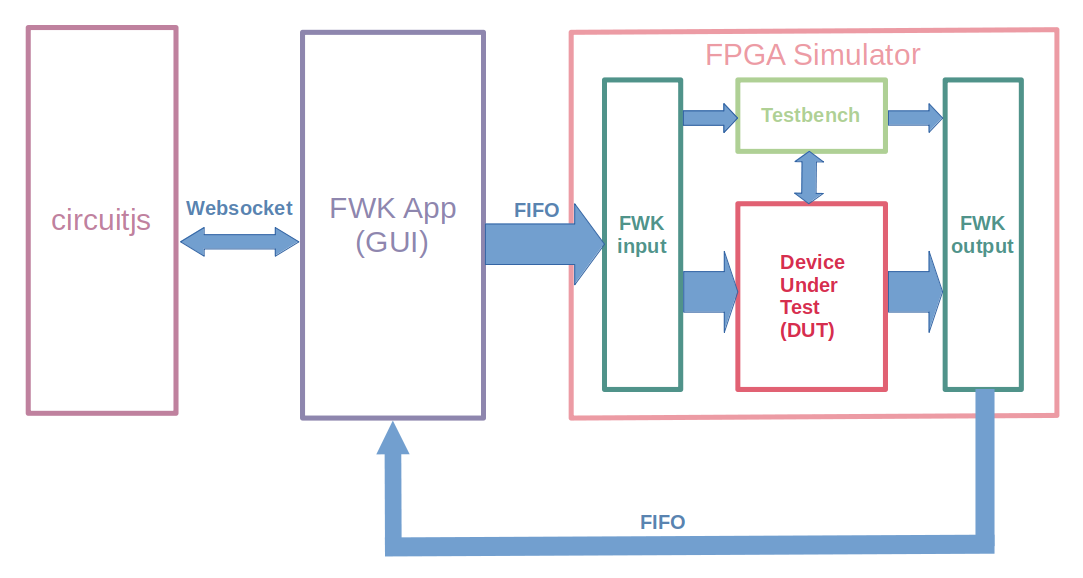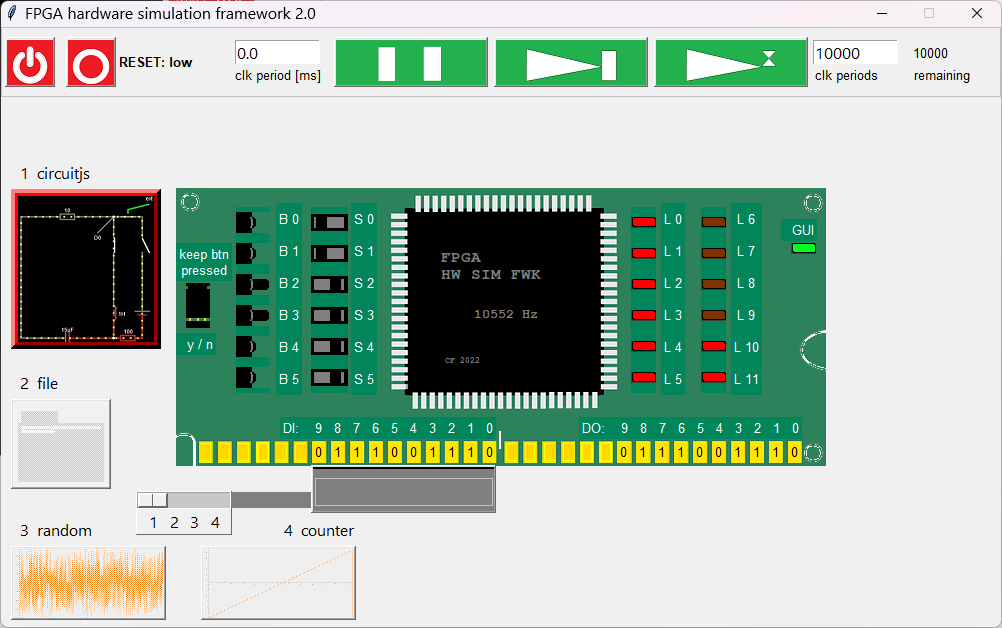FPGA Hardware Simulation Framework 2.2
-
includes generation of .exe file!
-
includes "synchronized" connection to circuitjs over websockets!
(the circuitjs simulation may even be run in a separate computer).
-
links:
To install dependencies go to python\hw_sim_fwk_2 and type:
pip_install_requirements.bat
To install the designer tool type:
pip install pygubu-designer
To generate and run an executable file go to python\hw_sim_fwk_2 and type:
gen_and_run_exe.bat
This only takes a moment to complete.
The VHDL code (e.g. VIVADO) sets the frequency of the output voltage generated by the application board ("sig-gen" in python app) which drives the input voltage of the transformer (circuitjs).
The output voltage of the transformer (circuitjs) is then read by the application board ("ADC" in python app) and input to the VHDL code using 10 digital inputs (VIVADO). The frequency can be changed using the push button B0.
The closed simulation loop runs "in sync" thus making sure that all models are consistent.
Note: simulating in sync with circuitjs is slower than the other options (random, counter, input file), e.g. 1500 Hz i.o. 5000 Hz.
This tool provides the following features, usually not supported by standard simulation methods:
- GUI
- concurrent input / output
- interactive user experience with emulated HW
- synchronized communication interface between App and VHDL-Simulator based on named pipes (FIFOs)
- synchronized communication interface between App and circuitjs based on websockets (synchronization is achieved using the original/unmodified circuitjs websocket API)
- any combination of simulation sources allowed: VHDL testbench, Python script, circuitjs model (the circuitjs model needs at least some python script as a "bridge" to the VHDL DUT)
The stimulus and results exchanged between the Simulation App written in Python and the VHDL Simulation Tool (any tool supporting VHDL 2008), are fast enough to produce a realistic and interactive HW behavior. The rate of data exchanged between Simulation App and circuitjs is also very high.
The current project is an improvement of an earlier project which has been optimized for performance. Signals beyond some frequency, which depends on the specific configuration and the used computer, will no longer be processed in real-time but the simulation will still be very fast.
In order to support simulation of "asynchronous" signals, the current rate of the simulation clock is reduced to 1/4th. But the overall simulation rate continues to be the maximum in "turbo mode" because the signals are exchanged in 4 different clock phases within each clock period.


